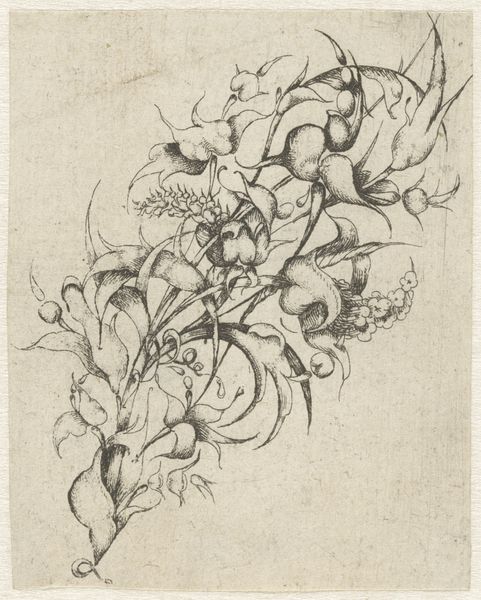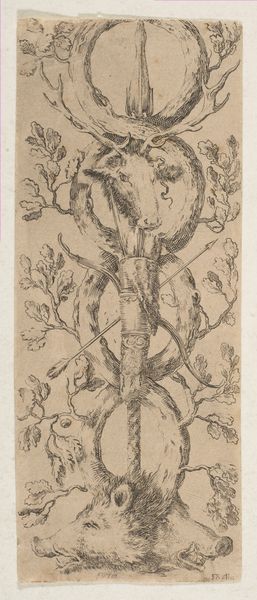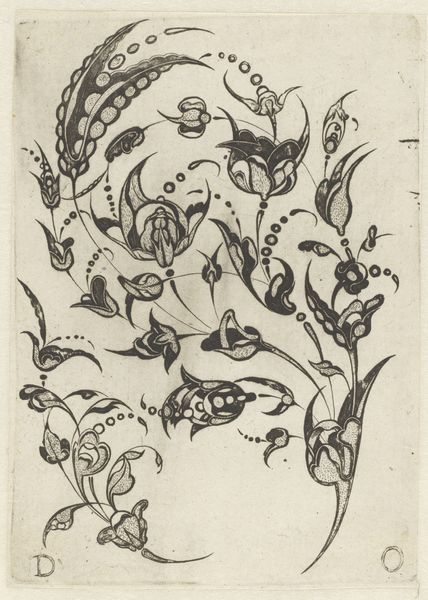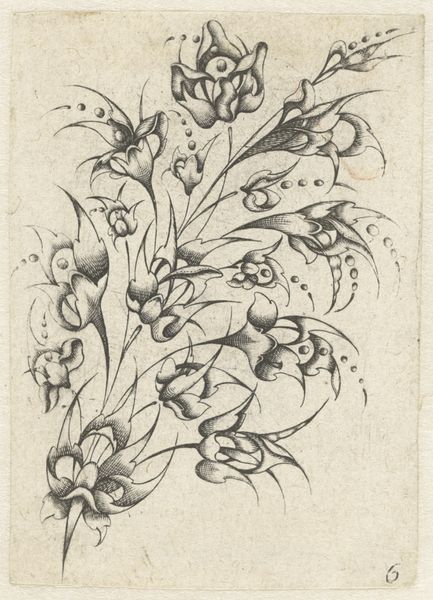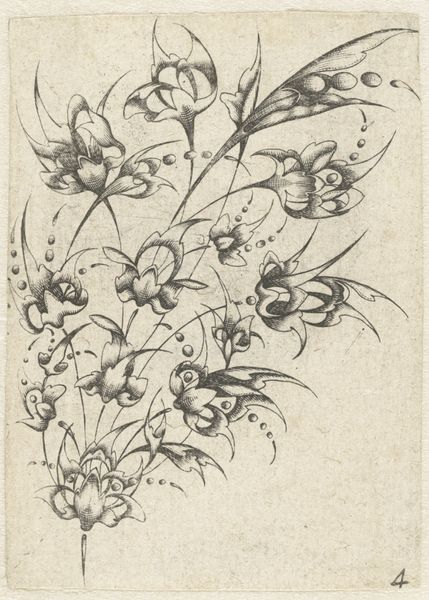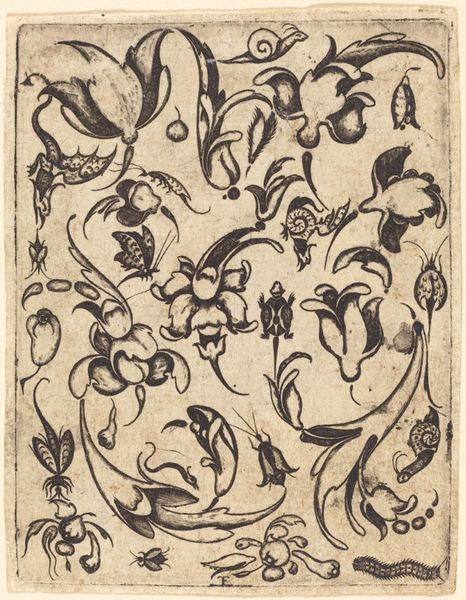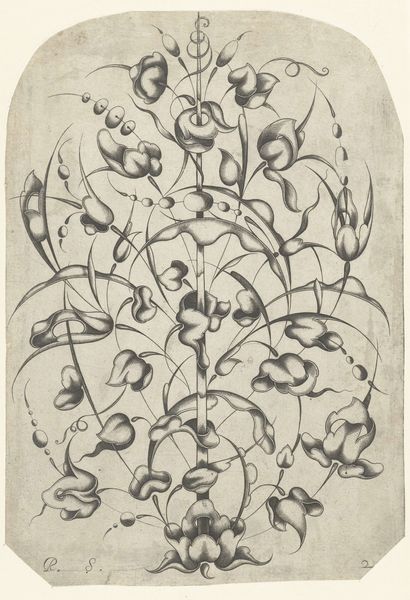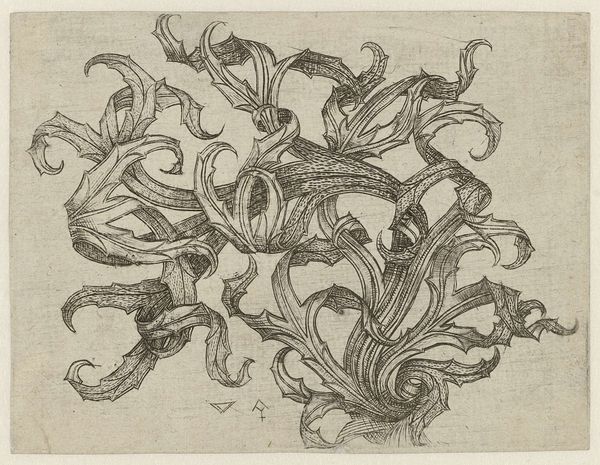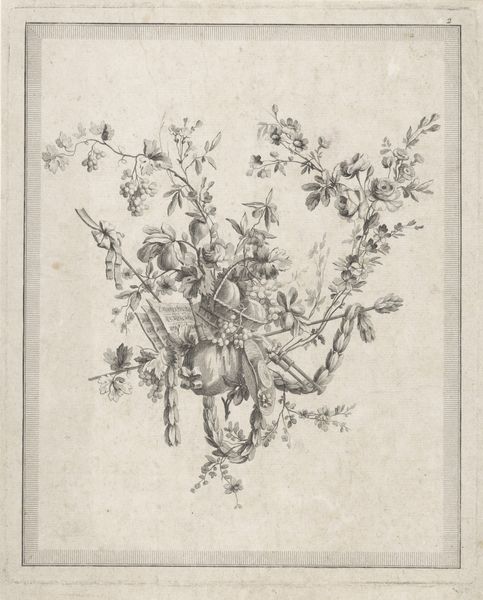
print, etching
#
baroque
#
pen drawing
# print
#
pen sketch
#
etching
#
form
#
line
Dimensions: height 85 mm, width 64 mm
Copyright: Rijks Museum: Open Domain
Curator: Before us, we have an etching dating from circa 1620 to 1625 titled "Klein edelsmidboeket met edelstenen." The maker of this print remains anonymous, which in itself sparks a series of compelling questions about art, agency and authorship. Editor: It's a tangle. It feels unresolved, not quite a flourishing bouquet but perhaps more a study, something in process, caught mid-creation. Curator: Precisely. Consider the term "edelsmidboeket" – goldsmith's bouquet. These ornamental prints served as templates, models for artisans creating luxury objects. The “bouquet” suggests not just decoration, but also the high art of manipulating precious materials to signify status. The absence of the artist's name further complicates its role, suggesting a design to be freely interpreted and re-authored by others. The artisan. Editor: So the symbolism rests in potentiality. It’s less about a defined symbol, but about possible interpretations, the seeds of an idea more than a declaration. Look at how the curling tendrils and gemstone forms are interwoven—almost suffocating one another. It feels less about beauty, and more about conveying opulence and power. And that even this abundance is carefully constrained. Curator: An important reading. Within the historical context, displays of wealth were potent symbols of social stratification, acts of privilege and almost aggressive flaunting. This piece, then, enters into the rhetoric around wealth. But if you remove context, its visual language doesn’t obviously betray any direct association. Editor: Absolutely. One sees the lines and begins the journey with the assumption of a purely natural history sketch or print; this directs you, me, or others to look beneath what might otherwise remain unseen—the cultural or social message carried on lines etched in time. I’m curious, as a template, if there were other visual queues available to othered classes. A roadmap for cultural ascendence in plain sight? Curator: That's an intriguing thought—a template for aspirational identities accessible across social divides. Whether that was the original intention is another question entirely, of course. However, as with all things the piece exists at all points between those two perspectives, to this point! Editor: A fascinating example of how symbols change through the lenses of context. We see only the echo of their meaning. I think I am walking away contemplating accessibility. Curator: A good place to leave it—with questions of what's on the surface and the complicated networks underneath.
Comments
No comments
Be the first to comment and join the conversation on the ultimate creative platform.

